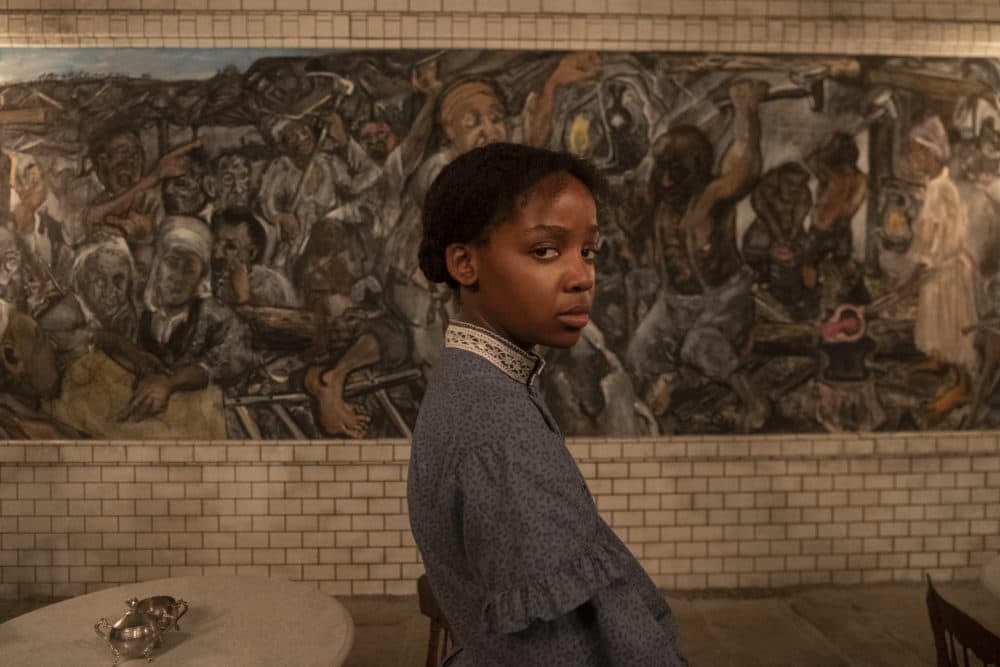Advertisement
Mental Health Counselor Helped 'Underground Railroad' Cast Process The Trauma Of Slavery

Amazon's new heralded series “The Underground Railroad” is deeply disturbing.
But director Barry Jenkins’ view of slavery and the underground railroad, based on Colson Whitehead’s historical fiction novel, is both horrifying and startlingly beautiful and redemptive. The enslaved Black characters seem to radiate light even under brutalizing circumstances.
Jenkins' work lays bare the trauma of what enslaved Black people and children went through in the United States. The show follows Cora, played by actress Thuso Mbedu, who decides to flee a plantation. As she explains in the series, her mother left her as a child while escaping slavery.
“The Underground Railroad” serves viewers multiple gut punches, such as showing a forest of lynching victims and a runaway being burned alive.
As a service to the actors and crew grappling with the subject material, Jenkins brought a mental health professional on board the set.
Kim Whyte, a Black practicing therapist based in Georgia, became the on-call, on-set counselor for “The Underground Railroad.” She says before she started as a counselor for the series, she searched and couldn’t find any other trauma therapists that have worked on films before her.
“I couldn't find a precedent,” she says. “So actually, that speaks highly for Barry and for Amazon Studios.”
Jenkins was clear in his directions for her role, she recalls.
“His instructions were pretty simple, ‘Kim, take care of my people,’ ” she says.
Whyte read through the script and decided her role was to be there for the team in the moment, whether that was during a triggering scene or confronting a challenging situation. Those moments happened frequently.
Take, for example, in the first episode: An enslaver hangs a captured runaway from chains and has him whipped to a pulp as a form of entertainment in front of his white dinner party guests. The enslaver then sets this captured runaway on fire.
The actor playing the captured runaway was safely strapped in a harness and wasn’t set aflame. Because of the sheer horror and brutality of the scene, Jenkins reiterated to the cast and crew that if they needed to stop, they could step away, she says.
“Their mental health had to come first. And that was the motto even on the set between takes,” she says. “Barry allowed me to go around to check on people to make sure that everybody was OK because he knew that that was challenging.”
Advertisement
Whyte remembers a scene in North Carolina, acting out a time when no Black people were allowed in town, that was particularly difficult for the cast and crew.
“A lot of people had to process it,” she says. “There was some anger, some feelings of sadness.”
Mbedu, who plays Cora, said Whyte helped the actress with meditation in order to fall asleep after the horrors of the day. And some of the white actors who had to play vile characters said they also needed her counseling.
“Everyone was affected by everyone else and by the material,” she says. Folks who might have been less impacted would go to Whyte and ask her to check in on others.
If Black actors were trying to process anger against white actors because of their character, Whyte would lead them through grounding exercises. They’d discuss “who this person is versus who the character is,” she says. It was all about giving people space to process, she adds.
For Whyte, the experience of being a therapist on set revealed “a story of spirit” in how “The Underground Railroad” cast and crew were treated, she says.
“There's some dignity even as we tell the most inhumane stories,” she says.
Whyte has advice for people who want to watch the series but are grappling with racial trauma during a particularly tough past year: Watch at your own pace. If you need to, step away and come back to the show at another time.
This segment aired on May 24, 2021.


